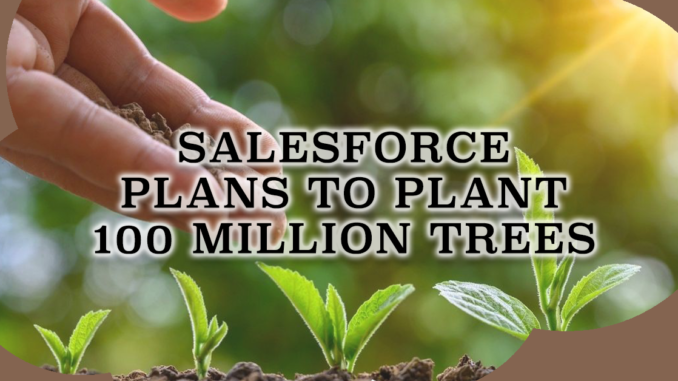
In Madagascar, where almost all of the country’s forests have been lost to deforestation, the tech company Salesforce is working with an organization to pay laborers to plant and protect 10 million trees. In Australia, they are paying to restore 30,000 native trees on farmland that hasn’t been taken advantage of. In Latin America, it’s funding more than 600,000 new trees in six countries. In Tanzania, it’s helping fund the natural regeneration of 800,000 trees. In areas destroyed by wildfire in California, it’s helping support work to replace thousands of trees that are less likely to burn in the next fire.
In early 2020, the company made a pledge to support the protection and restoration of 100 million trees by the end of the 2020s. It also worked together with the World Economic Forum to bring companies, governments, and non-profits together, to focus on the much larger goal of planting and protecting a trillion trees by the end of the decade through a new platform called 1t.org. Today, Salesforce announced the first milestone in its internal plan: So far, it has funded 10 million trees in 19 different projects.
Salesforce notices the potential of trees to help fight climate change by ridding the air of CO2. According to studies, there are 1 trillion hectares of land on the planet where 1.2 trillion new trees could be planted, potentially removing around 200 gigatons of carbon. Other scientists say that those claims are exaggerated, though they’re sure that protecting existing forests and planting new ones will play a major role in whether the world can reach a goal of net-zero emissions. And many companies are getting on board with the strategy, even as they overcome challenges such as how to monitor what’s happening in distant forests and make sure the trees that are planted now remain for years to come.
Over the course of 2020, Salesforce began finding projects to support, and teamed up with nonprofits such as the Nature Conservancy and American Forests. “The simple way to think about it is we try and find projects that are putting the right trees in the right place, by the right people, for the right reasons,” says Max Scher, head of clean energy and carbon programs at Salesforce.
In Tanzania, a project trains local communities to manage landscapes so seedlings naturally regrow in areas that might otherwise fill with grass. As native tree species grow, the project could also vacuum up an estimated 1.2 million metric tons of CO2 over 50 years. A project in Scotland is helping restore native woodlands on a farm, creating new sources of income while it continues to operate. In Madagascar, more than 200 workers are being paid decent wages to plant millions of trees, patrol forests, and fight forest fires. The projects will commence in the next planting season, with nonprofit partners sending reports about tree survival, and how the projects have changed the lives of the locals.
In every case, the projects must be more encouraging for local communities than the alternatives. “Making it economically viable for the farmers is really key,” Scher says. “We want to make sure that you can get as much money for growing and conserving and restoring trees as you can from cutting them down and selling them to paper mills.”
The company is also teaming up with startups Pachama and Dendra Systems, which restore ecosystems using drones. A platform called Uplink, created with the World Economic Forum, shares some of the startups innovating in the business of forest restoration. Salesforce wants to help make it easier for other companies to implement similar programs. “To reach the big global goals, it’s going to require a big lift and a lot of folks,” he says. Salesforce managed to fund 10 million trees through philanthropic grants, but as it continues to work toward the goal of 100 million, some of the total will come from its own carbon offsets. The company, which plans to use 100% renewable energy by 2022, first reached net-zero carbon emissions which means that it buys offsets for any emissions four years ago.
Leave a Reply